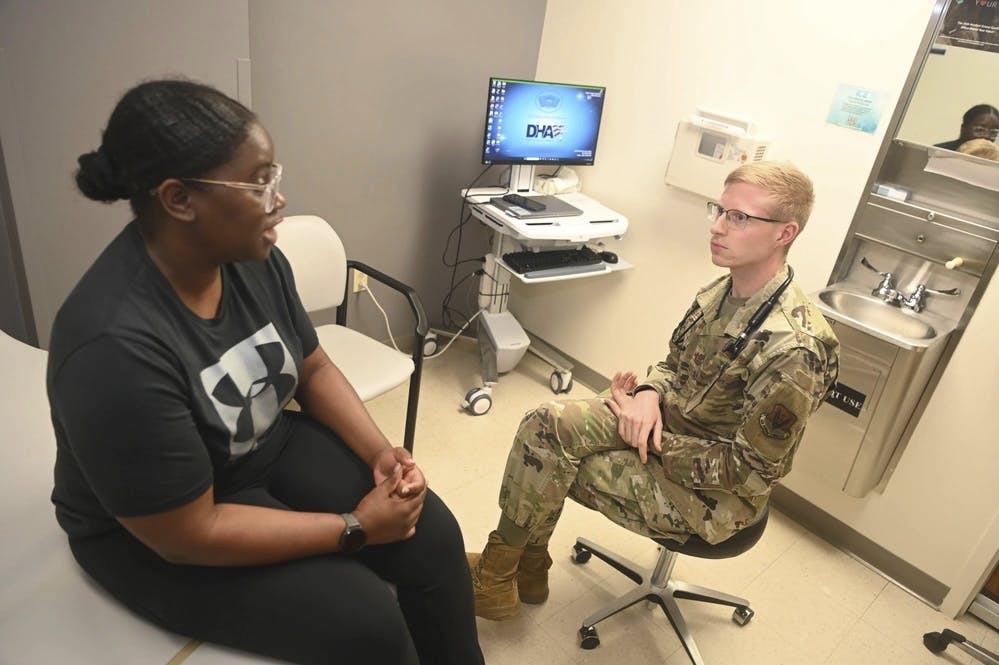A Reflection on User Experience From DOD’s First CXO
Colt Whittall highlights some of the initiatives that helped set the stage for transformed digital experience at the Air Force.

The Defense Department’s new customer experience portfolio management office launched last month is the latest effort the agency is taking to tackle the user experience.
“I think of it from beyond just having more modern IT equipment. I think it from a functionality perspective, from a scalability perspective, from a sustainability perspective,” said DOD Principal Deputy CIO Leslie Beavers at the Defense IT Summit this month about the new office.
The office’s launch comes at a time when agencies are collectively prioritizing federal directives to improve the customer experience. For DOD, it was also a direct response to a recommendation from a February 2023 report from the Defense Business Board that advises agency leadership on business management issues and how to bring in more best practices from industry.
DOD’s focus on the user experience is a growing priority that began on a smaller scale in 2019 when the Air Force hired Colt Whittall, its first chief experience officer the agency ever saw.
Early CX Work at the Air Force
Whittall played a major role in tackling some of the department’s initial technology challenges and implementing the department’s first digital tools with user experience principles in mind, he told GovCIO Media & Research in an interview.
Some of the initial focuses for this new position were to improve user experience of IT, improve user experience and performance of software, and improve user experience of the “mega user journey,” which he said are the user journeys that affect everyone.
Whittall described how he measured airmen’s user experience in real time and found intuitive ways to enhance their experience and collect data on how much that experience improved. For instance, Whittall piloted a robotic automation process for service members that were changing their stations, moving their families and records from one base to another.
“There were other elements of the strategy. There’s an acquisition component to it. There’s a tools component, a skills component, there’s a kind of short-term improvement component to it. And then there’s a long-term programmatic component to it,” Whittall said. “But really, the core is about measuring experience and driving improvement through use of that data.”
Whittall’s tenure also saw the implementation of many web tools designed to help airmen have a better digital experience. The office built a web analytics platform for the Air Force’s top software applications that functioned within the DOD’s firewalls, it conducted surveys on which software applications airmen found to be the most accessible and useful, and it tracked the performance of applications most used by airmen.
Whittall said that the biggest challenge in improving the user experience was funding. During Whittall’s time, the Air Force created a digital experience monitoring product, but paying for it was no easy task.
Licenses needed to be bought and then installed on the Air Force’s private cloud and go through accreditation. Whittall likened the pitching and selling of the service to getting a project funded through Silicon Valley, but in this case, the funding came through COVID-19 supplemental funds.
In other cases, like when he had to find a suitable platform to conduct surveys, he was able to use the Air Force Survey Office for minimal cost.
According to Whittall, his office helped ultimately change the perception and performance of software applications and the internet in the eyes of airmen, but that is only a start to a long road ahead.
“In 2020, user satisfaction was about five points or so underwater. In other words, we had about five percentage points more dissatisfied users than satisfied. In 2023, we completely flipped it. We were about two times more satisfied than disappointed,” Whittall said.
This is a carousel with manually rotating slides. Use Next and Previous buttons to navigate or jump to a slide with the slide dots
-

VA CIO Targets Modern IT and Smarter Workforce Alignment
Agency leaders told lawmakers they are focused on trimming legacy systems and restructuring its workforce to streamline operations.
3m read -

The Next AI Wave Requires Stronger Cyber Defenses, Data Management
IT officials warn of new vulnerabilities posed by AI as agencies continue to leverage the tech to boost operational efficiency.
5m read -

Fed Efficiency Drive Includes Code-Sharing Law, Metahumans
By reusing existing code instead of rewriting it, agencies could dramatically cut costs under the soon-to-be-enacted SHARE IT Act.
5m read -

IRS Makes Direct File Code Public as Lawmakers Debate Program’s Fate
The agency sees the Direct File source code as beneficial to government digital services despite what happens with it in proposed budgets.
5m read -

FEHRM CTO Targets Two-Year Cloud Migration for Federal EHR
Lance Scott touts new EHR tech advancements, including cloud migration, expanded data exchange and AI integration to improve care delivery.
4m read -

Federal Agencies Tout Tech in President Trump’s First 100 Days
Defense modernization and health care restructuring landed among some of the key IT highlights within the president's first few months.
6m read -

AI Boosts Customer Experience at Federal Contact Centers
Federal contact center leaders at DOL and VA are exploring AI's potential to drive efficiency and boost customer experience.
3m read -

Feds Modernize Services to Improve User Experience
Tech leaders at CMS, USPTO and IRS are leveraging tech and bolstering security to drive new efficiencies and enhance user experience.
5m read -

Acting TMF Executive Director Eyes AI to Drive Efficiency
Acting TMF Executive Director Jessie Posilkin looks to AI to modernize government's IT infrastructure and improve efficiency.
5m read -

Platform One Tackles Next Phase in Software Delivery
The software delivery engine sets its sights on DevSecOps infrastructure and preparing for a post-quantum future as it matures.
7m read -

Federal IT Efficiency Summit
The Efficiency Summit is a must-attend for agency decision-makers looking to streamline IT modernization efforts that save taxpayers money.
Hyatt Regency Tysons Corner Center | 7901 Tysons One Pl, Tysons, VA 22102 -

VA Restructures Workforce to Cut Costs, Increase Efficiency
The agency is restructuring its workforce to streamline operations, invest in technology and improve veteran services.
4m read
















